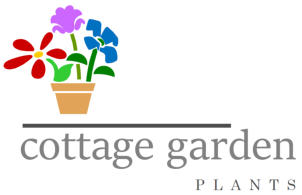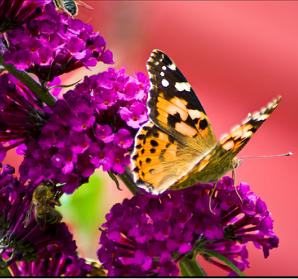



HERBS

BASIL
One of the most useful herbs - a key ingredient for many Italian and Indian dishes and great when fresh in salads.
The 'fresh-from-the-garden' taste is far tastier than the dried variety.
Basil originates from India where it is considered sacred to the Gods. It now grows wild in the Mediterranean areas,
and is one of the most popular herbs in that area.
Basil lives up to it's origins and is best suited to the warmer areas of the UK .

CHIVES
Chives are a member of the onion family. They make a delicious accompaniment to potato salads and fish dishes. Their tight balls of purple
flowers are loved by bees and humans alike. What’s more they can be eaten in salads along with the tangy leaves.
Chives are a doddle to grow and take up very little space in the herb garden or vegetable patch. They make a great companion plant – their
scent helps confuse pests such as the carrot root fly and they can even be grown in containers.
Chives will grow in almost any soil and once they have established, chives will form small bulbs beneath the ground.
DILL
A multi- purpose herb grown for its seeds and foliage. Dill originates from Eastern Europe and is much hardier than most people
think. Fresh, frozen or dried, the ferny foliage and seeds are a tasty flavouring for fish, lamb, new potatoes and peas. Remember to
add dill at the end of cooking, because cooking will destroy most of its flavour. It tastes very much like aniseed, so be sparing when
adding it to food it willoverwhelm other flavors. Dill is tolerant of most conditions and easy to germinate, so it causes few problems
for novice gardeners.

Herbs are generally easy to grow and can either be grown 'indoors' in good light
perhaps on the kitchen window sill - or outside either in pots or tubs or direct in the
ground.
A few tubs of your favourites by the kitchen door or barbecue, or a more formal herb
garden. Anyone who cooks should have a few herbs
Not only are herbs useful for cooking but they can also be very decorative in their
own right. Our collection is both culinary and ornamental and can be grown together
in a formal herb garden.
Our herb garden tubs are avalible for sale from may onwards conaining a variety of
different herbs
MINT
Mint is a fantastic herb to grow in the garden. It is easy to grow and emits a wonderful scent when you brush past it. It can be used
in a variety of dishes including roast lamb and salads and goes well with freshly podded peas. Mint is a hardy perennial and a
voracious grower. It will do well in both sunny and shady parts of the garden. It will also thrive in pots; in fact if you have a small
garden it is recommended that you grow mint in a pot to prevent it from spreading and taking over the other herbs.

ROSEMARY
Rosemary is one of the most decorative herbs and is well worth growing for its appearance alone. Dependent on the variety, it has small,
profuse flowers appearing in late spring which range from dark blue through pale blue right down to white.
Another great advantage of rosemary is that it is a perennial and will last for twenty years or more with only minimal pruning once a year. Put
this together with its cooking value as a herb and this shrub is a winner - what more do you want from a plant!
Although rosemary is a native plant of the Mediterranean and Asia, it is still reasonably hardy in cooler areas. It will survive a severe lack of
water for lengthy periods of time. Rosemary has leaves which look like pine needles. It is these needles which can be finely chopped and
used to flavour a variety of dishes, especially stuffing. Many cooks simply cut sprigs of rosemary and place many roasted meats, especially
lamb, pork, chicken and turkey with great results.

PARSLEY
Parsley is one of the most popular herbs used in cooking in the UK today. It is a versatile herb that can be added to a number of meals
including fish and potatoes. It can also be made into a delicious parsley sauce that can be added to all sorts of dishes.
Parsley requires a fairly rich soil in order to thrive. Once established, however, parsley is a low-maintenance plant that requires very little
attention if given the right conditions to grow in. Parsley is a biennial herb, this means it will flower and produce seeds in its second year of
growth, so you’ll only need to replace it every two years.

MARJORAM
A hardy, perennial herb, native to North Africa and Asia which likes a well drained, fertile soil. Marjoram plants can spread if left to
their own accord. Marjoram, or also called "sweet marjoram" is a variety grown for its culinary uses as a cooking herb and as an
ornamental plant. This variety grows to about two feet high with purple flowering leaves in the summer which attract many
beneficial bees and insects. The flowering tops are used in dried arrangements here at the farm and we use the dried herb leaves
in many food dishes. It has a mild oregano flavor and is great in soups, salads, sauces and with vegetable dishes.

THYME
Thyme is a great herb to have growing in the garden. Originally from southern Europe it has attractive foliage and
flowers and it is easy to care for. Thyme is a hardy perennial herb, which means it survives throughout he winter
months and will last for several years. Thyme grows to a height of up to 30cm. It is highly aromatic and emits a
wonderful scent when trodden on. Some low-growing varieties of thyme are used as an alternative to a lawn.

SAGE
Sage is a popular herb used to make stuffing and to flavour meat dishes. It is native to the Mediterranean but is a hardy perennial and is
easy to grow. Sage enjoys a sunny position in a well-drained, fertile soil. Sage is an attractive plant to have growing in the garden; its
velvety leaves and small, purple flowers look spectacular in the herb garden and herbaceous border alike.
Varieties of Sage
There are plenty of sage varieties to try; including purple and variegated-leaved ones, with a range of differently-coloured flowers:



TARRAGON
Tarragon grows to two or three feet tall and likes moderate sun, preferring a little shade during the warmest part
of the day. It grows well in a rich loamy soil that holds moisture, but drains well. Mulching is beneficial to this end.
Tarragon is unique in that during growth, it seems to have little aroma, yet after the leaves or tops are harvested,
the oils concentrate and start emitting their unique tarragon sweet smell, similar to freshly cut hay.
CORRIANDER
Coriander is a highly fragrant annual herb and will grow to up to 2 feet in height. Coriander seeds are known as Coriander and its leaves
are often known as Cilantro. It is sometimes known as Chinese Parsley, is grown for both its seeds and leaves and both are used for
culinary purposes. The leaves can be used raw in salads, sandwiches and salsas or in cooked items such as Bread or Curry.
Like most herbs, Coriander likes a lot of light so if growing indoors make sure it is positioned on a south facing windowsill. A minimum of 4
hours sunshine a day is recommended.
It will also do better in warm spots (it originated from the Mediterenean or Asia).
Common Name :
Varoius Types see below
Blooming Season :
Spring, Summer
Plant Habit :
Upright
Water :
Medium
Position :
Sun
Height :
12inches
Alcea (Hollyhock)
Aquilegia
Buddliea
Buddliea Altternifolia
Delphinium
Dianthus (Carnations)
Echinacea
Eryngium
Geranium
Gerbera
Geum
Gypsophila
Herbs
Hosta
Iris
Kniphofia
Lantana
Leucanthemum
Lupins
Monarda
Penstemon
Peony
Phlox
Rudbeckia
Sidalcea
Sysirinchium
Tanacetum (Pyrethrum)
Thalictrum
Trollius
Verbena
About Us
Where To Find Us
Contact Us
Alton
Aresford
Burley
Cosham
Ellingham & Ringwood
Emsworth
Odiham
Petersfield
Ringwood
Southampton
Southsea
Winchester








Our herb garden tubs are sold in 15ltr, 20ltr, and 25ltr containers with up to 10 diferent herbs and are priced according to size



